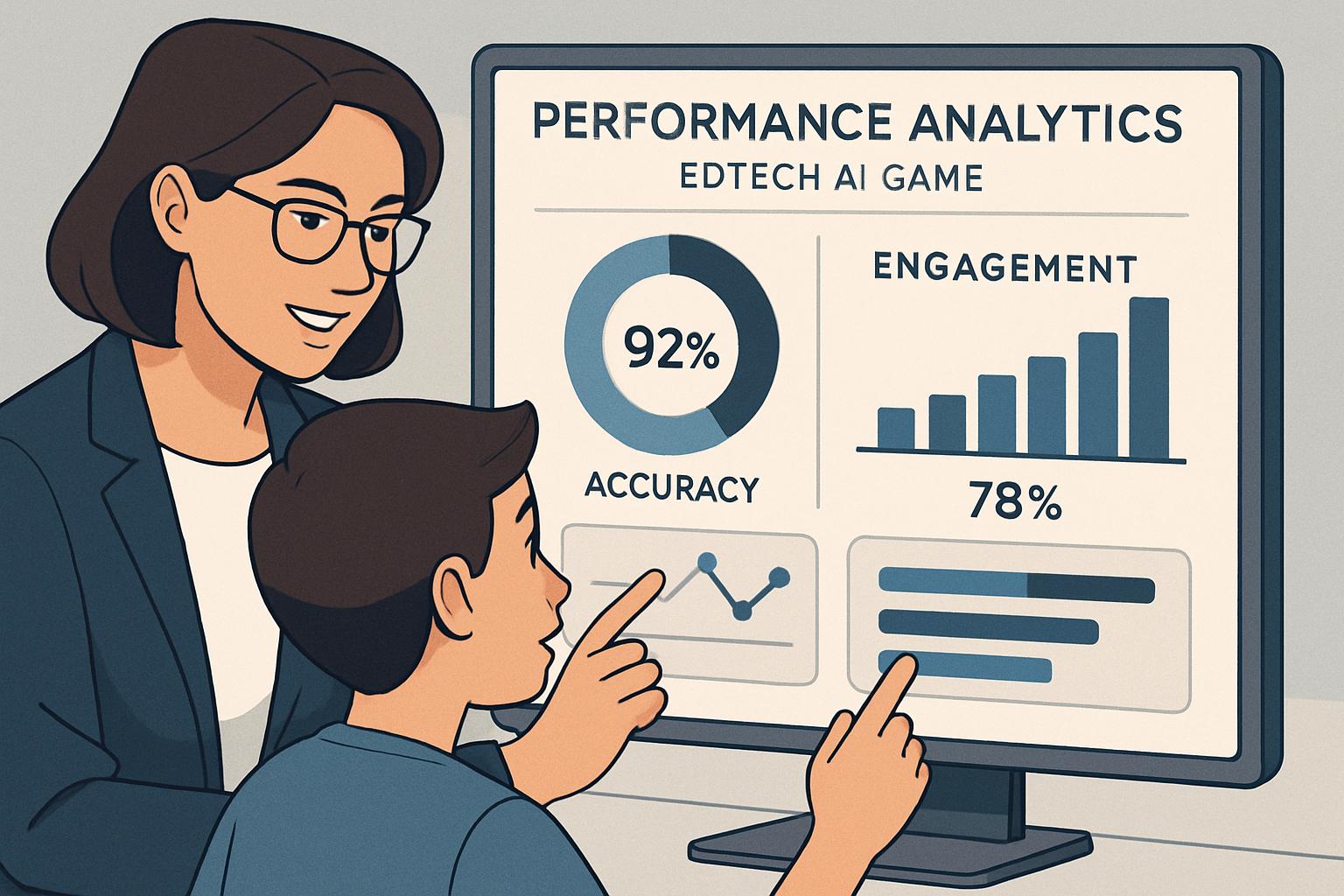
AI CERTS
4 hours ago
EdTech AI Games: Separating Hype From Verified Classroom Impact
Readers will understand what the numbers actually show, where gaps persist, and how policy conversations evolve. Throughout, we spotlight EdTech AI within the broader debate on evidence-based digital instruction. Finally, professionals will find certification pathways for sharpening skills in this rapidly advancing arena. Additionally, the piece maintains strict word limits and readability standards for quick professional scanning. In contrast, many vendor blogs bury key caveats behind jargon; we make them explicit.
EdTech AI Evidence Gap
Current discourse often repeats the 48% figure without citing a primary study. Nevertheless, exhaustive database searches reveal no peer-reviewed trial confirming that exact improvement. Therefore, analysts recommend framing the claim as unverified until new large-scale evaluations appear. Sitzmann’s 2011 meta-analysis, by contrast, reported only a 9% retention lift for simulation games.

More recent STEM game reviews show moderate gains, roughly Hedges g 0.62, across varied outcomes. However, these effect sizes translate to smaller percentage shifts when measured as long-term retention. Consequently, educators should treat headline percentages with skepticism and inspect study designs carefully. EdTech AI applications benefit from the same scrutiny because adaptive algorithms rarely get isolated in trials.
Vendor excitement is undeniable, yet empirical backing lags behind marketing. Consequently, the next section examines benefits and limits in finer detail.
Market Forces Driving Adoption
Meanwhile, global demand for personalized education tools keeps expanding. Grand View Research projects multibillion-dollar growth for interactive instructional software through 2030. Moreover, investors chase startups blending Gamification, adaptive analytics, and subscription models. Duolingo credits its Birdbrain algorithm for higher daily-active users after rolling out conversational agents. Consequently, many decision makers equate user engagement metrics with confirmed retention gains. Learning dashboards promise administrators quick insight, yet may mask deeper outcome disparities.
EdTech AI vendors showcase dashboards flashing impressive completion curves, yet rarely share raw experimental protocols. In contrast, district procurement teams increasingly request third-party audits before signing multi-year licenses. UNESCO guidelines further urge transparency, fairness, and data-protection guardrails for every adaptive deployment. Therefore, market momentum intersects with growing regulatory scrutiny. These dynamics reshape buying cycles.
Vendor excitement is undeniable, yet empirical backing lags behind marketing. Consequently, the next section examines benefits and limits in finer detail.
Benefits And Key Limits
Extant meta-analyses confirm moderate cognitive and affective gains from well-designed educational games. Furthermore, adaptive sequencing personalizes pace, often freeing teacher time for higher-order coaching. EdTech AI modules can target misconceptions faster than static resources when evidence aligns. Gamification elements such as points and leaderboards can motivate reluctant students when aligned with clear objectives. However, benefits vary widely across subjects, age groups, and implementation fidelity.
Publication bias remains a persistent concern, inflating average effect sizes in some literature. Additionally, many studies measure short-term quizzes rather than long-term knowledge retention. Equity issues loom, because low-resource schools may lack devices or bandwidth for feature-rich platforms. Data privacy risks escalate when adaptive engines collect granular performance traces.
Overall, advantages exist but hinge on context and design quality. Therefore, policy considerations become crucial, as explored in the following section.
Policy And Ethics View
UNESCO’s 2023 framework emphasizes human-centered design, data minimization, and continual impact evaluation. Moreover, several ministries now mandate algorithmic audits before platform procurement. Consequently, EdTech AI providers must document how models avoid discriminatory outcomes. Institutions also press vendors to provide explainability dashboards for educators.
In contrast, smaller startups often struggle to finance rigorous compliance processes. Nevertheless, aligning early with standards can become a competitive differentiator. Public-private research collaborations offer one pragmatic pathway to share testing costs. Furthermore, educators may upskill via the AI Educator™ certification for sharper oversight.
Ethical guardrails are tightening across jurisdictions. Subsequently, data-driven decisions require stronger research foundations, covered next.
Research And Data Insights
Multiple robust meta-analyses now delineate average gains with helpful granularity. For instance, the 2023 STEM review reported g 0.62 against traditional instruction. Additionally, network analyses reveal modality differences between VR, AR, and standard games. Nevertheless, long-term retention studies remain scarce, particularly for EdTech AI interventions. Learning scientists call for expanding retention follow-ups to one academic year.
Key quantitative takeaways appear below.
- Digital games improve STEM test scores by roughly 0.62 effect size (2023 meta-analysis).
- Simulation games boost knowledge retention about 9% on average (Sitzmann 2011).
- District-vendor DreamBox report claims 196% ROI yet lacks independent replication.
- Duolingo metrics show higher daily use after adaptive features but not causal retention proof.
- Peer-reviewed EdTech AI trials remain limited, underscoring urgent research needs.
These numbers highlight progress and caution in equal measure. Moreover, none isolate Gamification effects from algorithmic personalization completely. Therefore, forthcoming research should employ randomized designs with six-month follow-ups. In contrast, qualitative journals emphasize motivational shifts not captured by numeric averages.
Stronger datasets will clarify efficacy and fairness. Consequently, practitioners need actionable guidance, addressed in the final section.
Actionable Steps Forward Today
First, insist on transparent methodologies when vendors present headline statistics. Ask for raw data, control groups, and retention timeframes covering entire terms. Second, align deployments with clear curricular objectives rather than chasing novelty. Third, integrate formative assessment to verify real progress beyond screen time.
Additionally, build internal evaluative capacity through professional development and peer networks. EdTech AI pilots should include equity benchmarks and privacy impact assessments. Moreover, maintain fallback analog instruction for learners with limited connectivity. Gamification features require ongoing monitoring to prevent unhealthy competition dynamics. Learning communities can share rubric templates and reduce duplicated evaluation effort.
These steps create a feedback loop linking design, evidence, and policy. Subsequently, institutions can scale only those tools demonstrating sustainable value.
Rigorous analysis reveals a nuanced picture behind flashy retention headlines. EdTech AI offers promising personalization, yet empirical confirmation remains limited and context-dependent. Nevertheless, meta-analytic trends suggest measurable gains when games align with pedagogical goals. Policy frameworks and certifications provide practical guardrails for safe, equitable deployments. Therefore, stakeholders should demand transparent evidence, prioritize student wellbeing, and iterate through controlled pilots. Ready to deepen expertise and lead responsible innovation? Explore the linked AI Educator™ certification and advance your strategic impact today.



